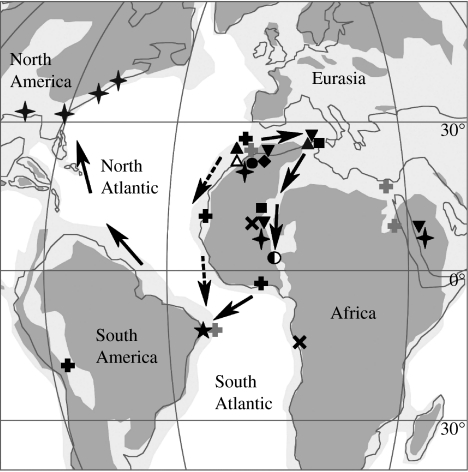Figure 4.
Palaeogeography of North America, South America, Europe and Africa during the Upper Maastrichtian–Palaeocene, with the indication of two possible dispersal routes for the Dyrosauridae. In both hypotheses, dyrosaurids have originated in northern Africa, with the first dispersal route (solid arrow) going eastwards, reaching Asia, and crossing the inland sea that stretched across the present Sahara. The second hypothesis (broken arrow) suggests that dyrosaurids could also have moved westwards and then south along marginal basins of the African coast. Before the end of the Cretaceous, they had crossed the Atlantic Ocean reaching South America in the present area of Pernambuco, dispersing from there northwards along the coast reaching North America and other areas of the South American continent. Occurrences of taxa are indicated as follows: four-point stars, Hyposaurus; left-filled circle, Sokotosuchus; star, Guarinisuchus; diamond, Chenanisuchus; circle, Arambourgisuchus; open triangle, Atlantosuchus; filled down triangles, Rhabdognathus; crosses, Congosaurus; squares, Phosphatosaurus; filled upright triangles, Dyrosaurus; light grey pluses, Dyrosauridae indet from the Cretaceous deposits; black pluses, Dyrosauridae indet from the Palaeocene deposits.

